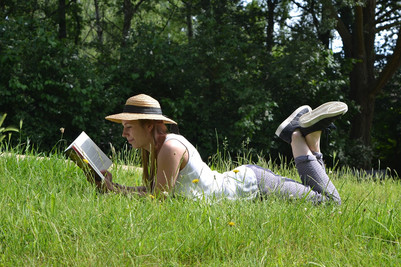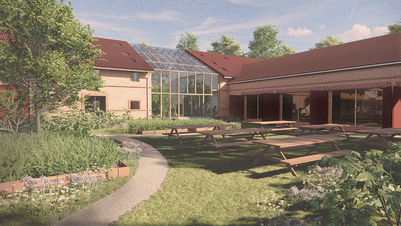
Conference Abstract | Tom Davies and Gabrielle Kielland Friis

Of Motorcycling, Agatha Christie and the Nimrud Head: How Ancient Tell-Sites
Inspired Oslo’s Housing
This paper tells the tale of a romance, unusual in its connecting ‘60s community-focused housing design with crimewriters and prehistoric-heads, between the society daughter of Oslo’s Kielland family, Anne Tinne (Cathrine) Kielland Friis (1927-1995) and her Danish husband Mogens Lønborg Friis (1919-2006). Their farflung travels working as archaeologists played a strong influence in their later contribution to the Oslo’s Post-war housing. This paper draws together these diverse strands presenting their story and revealing the connection between the celebrated communityfocused housing of Neave Brown, Atelier 5 and others with that of the Friis’ and others in Oslo and Scandinavia.
The Friis’ met studying in Copenhagen and following a brief period with Danish architects Kay Fisker and Vilhelm Lauritzen, left Denmark to travel and explore a shared interest in archaeology. This came through an opportunity to join archaeologist Max Mallowan and his wife crimewriter Agatha Christie at the Nimrud excavations. On Mallowan’s recommendation, they later joined the Danish Royal Expedition to the prehistoric tell-sites of Shimshara (Shemshara), Northern Iraq1, contributing valuable architectural critique and draftingskills. This later took them to Egypt, Greece and Rome, where they learned much that would later characterise their work as architects.
Arriving in Oslo in the early ‘60s they began their contribution to Oslo’s housing, translating their archaeological experience into the iconic Upper Ullern Terrace (1965) notable in its simplicity and resonance with the communityfocused housing of the time and tackling one of the steepest sites in Oslo. Here they met the contentious housebuilder Olav Selvaag (1912-2002) with whom they produced several schemes, most notably the ‘Star Wars’-esque Vestli in East Oslo (1967-78). Anne Tinne was later profiled in an exhibition of inspiring female architects at Paris’ Pompidou Centre. This paper presents this journey by motorcycle across Europe and the Middle East and is taken from their uncatalogued private archives. It comes at a time when the post-war heritage of Oslo is being reappraised and seeks to tell that story and reveal their contribution. The paper will be co-written by Tom Davies and Gabrielle Kjelland Friis.
1 Mortensen, P. (1970) Tell Shimshara: The Hassuna Period. Copenhagen: The Royal Danish Science Company Periodicals.
Tom Davies and Gabrielle Kielland Friis have been working together on the archives of Gabbi’s parents the architects and archaeologists Anne Tinne (Cathrine) Kielland Friis and Mogens Lønborg Friis for the past year and half.
Tom is currently finishing a PhD in the community and heritage of Post-war housing, which brought him into contact with the Kielland Friis’ work and after Gabbi and he got talking about her parents’ archives and work as archaeologists, they hit it off and have been enthusiastically engaged on the project ever since. They have researched and written together and presented widely with a view to finding homes for all the amazing material and writing a book about Anne Tinne and Mogens hitherto unrecognized contributions to architecture and archaeology.
Gabbi who is half Danish and half Norwegian given her parentage is a Project Administrator for Norwegian Consultancy Norconsult. Outside of which she is kept busy curating the large material archive of her parents. Her life has been rich with different approaches to work and residence, where many years were spent living, working, studying Music, and Science of education in Florence, Italy. She played trombone in Ray Bepi Big band in Florence, and the Filarmonica di Fiesole whilst living in Italy and today plays in Oslo’s Bestum Stasmusikk and Storbandet Jazzå.
Tom, an archaeologist by trade, has worked in the UK and Norway (where he has lived for 10 years) with community and heritage projects and provided consultancy to development projects and
government and public bodies. Following the PhD which has included live community projects in London and Oslo, he is developing his work with community and heritage through a diverse range of different projects in Norway and the UK and like Gabbi, has a keen interest in music and has for many years written and played songs in bands and solo.















